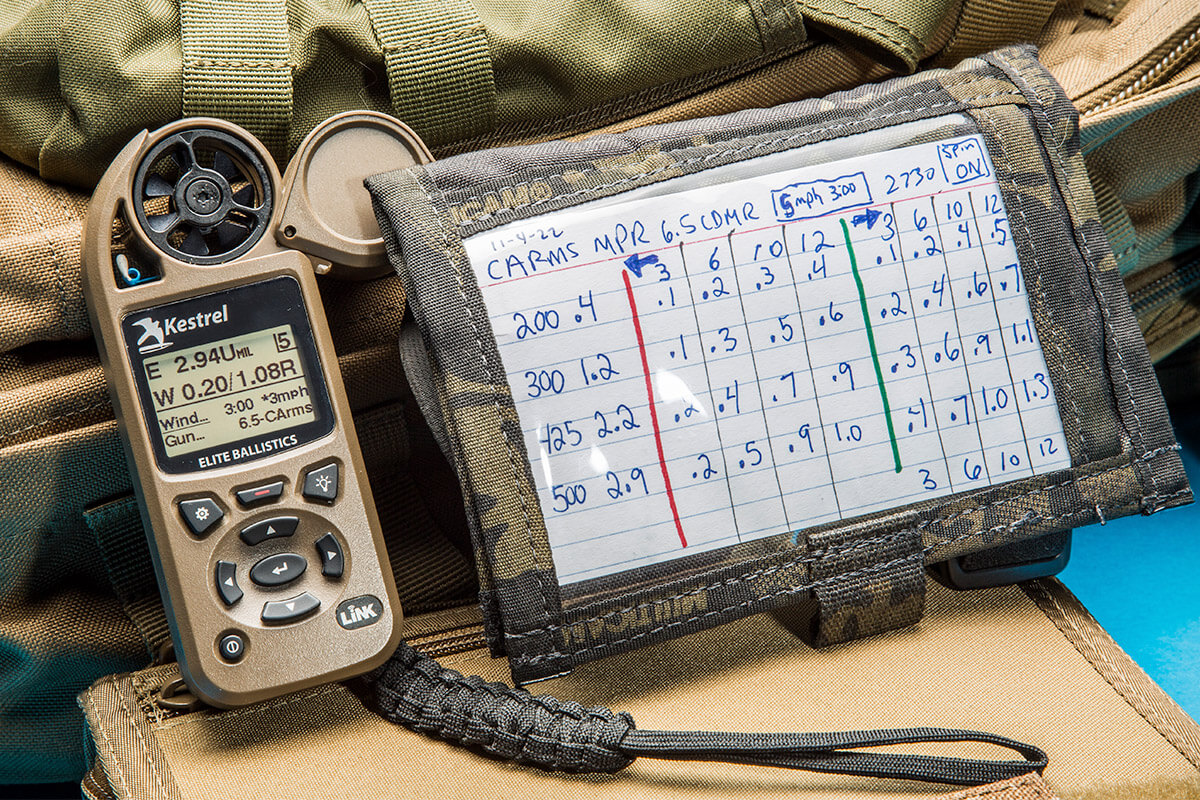Advanced Ballistics: Terminal Effects & Practical Applications

Introduction
In our companion article, Ballistics Basics: Understanding Internal & External Ballistics, we explored what happens inside the barrel and during a bullet's flight. Now, we'll focus on what happens when the bullet reaches its target and how to apply ballistic knowledge in practical shooting scenarios.
For precision rifle shooters, understanding terminal ballistics and practical applications isn't just about academic knowledge—it directly impacts equipment selection, shooting techniques, and ultimately, success in the field.
3. Terminal Ballistics
Terminal ballistics is the study of how bullets perform when they strike a target. This field is particularly important for hunters and tactical shooters, but competition shooters also benefit from understanding how their bullets interact with steel targets.
Energy Transfer
When a bullet strikes a target, its kinetic energy is transferred to the target material. This energy transfer is calculated using the formula:
Kinetic Energy (ft-lbs) = (Bullet Weight × Velocity²) ÷ 450,240
Key points about energy transfer include:
- •Velocity matters more than weight: Because velocity is squared in the formula, it has a greater effect on energy than bullet weight
- •Energy drops with distance: As bullets slow down, their energy decreases significantly
- •Energy alone doesn't determine effectiveness: How that energy is transferred matters greatly
Bullet Construction and Performance
Different bullet designs perform differently on impact. The main categories include:
- •Full Metal Jacket (FMJ): Minimal expansion, tends to penetrate deeply
- •Hollow Point: Designed to expand, creating a larger wound channel
- •Ballistic Tip: Combines penetration with controlled expansion
- •Monolithic: Made from a single piece of metal, often copper, with consistent expansion
- •Match/Target: Designed for accuracy rather than terminal performance
For precision rifle competitions, match-grade bullets with high BCs are typically used because terminal performance is less important than accuracy and consistent flight characteristics.
Hydrostatic Shock and Cavitation
When bullets strike tissue or other fluid-filled mediums, they create:
- •Permanent cavity: The physical hole created by the bullet's path
- •Temporary cavity: A momentary stretching of tissue due to energy transfer
- •Hydrostatic shock: Pressure waves that can damage tissue beyond the bullet's path
High-velocity rifle bullets create significant temporary cavitation and can cause damage well beyond their direct path through tissue.
Penetration vs. Expansion
There's often a trade-off between penetration and expansion:
- •Deep penetration: Needed to reach vital organs, especially through barriers
- •Expansion: Creates larger wound channels and transfers more energy
Modern hunting bullets aim to achieve both adequate penetration and reliable expansion across a range of impact velocities.
"The perfect hunting bullet doesn't exist—there are only bullets that are perfect for specific applications. Match your bullet to your target and expected shooting conditions." — Craig Boddington
4. Practical Applications
Now that we understand the theory, let's explore how to apply this knowledge in practical shooting scenarios.
Ballistic Calculators
Modern ballistic calculators are powerful tools that use the principles we've discussed to predict bullet trajectory. They account for:
- •Bullet specifications: Weight, BC, diameter
- •Firearm data: Muzzle velocity, sight height, zero distance
- •Environmental conditions: Temperature, pressure, humidity, altitude
- •Wind data: Speed, direction, and value
Popular ballistic calculator apps include Hornady 4DOF, Applied Ballistics, and Strelok Pro. Many precision shooters also use dedicated devices like Kestrel weather meters with built-in ballistic solvers.
Creating a DOPE Card
DOPE (Data On Previous Engagements) cards record your rifle's actual performance at various distances. To create one:
- Start with a ballistic calculator to generate initial data
- Shoot at known distances and record the actual adjustments needed
- Note environmental conditions for each shooting session
- Refine your data over multiple range sessions
- Create a waterproof reference card or store the data in a ballistic app
Pro Tip: While ballistic calculators are excellent starting points, nothing replaces actual field-verified data for your specific rifle and ammunition combination.
Ranging Techniques
Accurate distance measurement is critical for precision shooting. Options include:
- •Laser rangefinders: Fast and accurate, but can be affected by environmental conditions
- •Mil-based ranging: Using reticle subtensions to calculate distance based on known target size
- •MOA-based ranging: Similar to mil-ranging but using minute of angle measurements
- •Pre-ranging: Measuring distances to landmarks in advance
For competition shooting, it's wise to verify distances with multiple methods when possible, especially for long-range targets.
Angle Shooting Considerations
When shooting at steep uphill or downhill angles, the effective distance (for ballistic purposes) is less than the actual line-of-sight distance. This is because gravity acts perpendicular to the Earth, not along your line of sight.
To compensate:
- •Use a cosine indicator or inclinometer to measure the angle
- •Calculate the effective distance using the formula: Effective Distance = Actual Distance × cos(angle)
- •Use a ballistic calculator with angle compensation features
Example: A 500-yard shot at a 30-degree angle has an effective ballistic distance of about 433 yards.
Density Altitude Effects
Rather than tracking temperature, pressure, and humidity separately, many precision shooters use density altitude as a single value that combines these factors to indicate air density.
Higher density altitude means thinner air and:
- •Less drag on the bullet
- •Flatter trajectories
- •Less wind deflection
A Kestrel weather meter with Applied Ballistics can automatically calculate density altitude and adjust your ballistic solution accordingly.
5. Advanced Ballistic Concepts
Transonic Effects
As bullets slow down and approach the speed of sound (approximately 1,125 fps at sea level), they enter the transonic region where aerodynamic behavior becomes less predictable.
During this transition:
- •Accuracy may deteriorate
- •Bullet stability can change
- •Ballistic calculators may become less accurate
For extreme long-range shooting, select bullets that maintain supersonic velocity throughout your expected engagement distances or that are specifically designed to remain stable through the transonic region.
G1 vs. G7 Ballistic Coefficients
Ballistic coefficients are typically referenced against standard projectile models:
- •G1: Based on a flat-based, short-nosed projectile (traditional)
- •G7: Based on a boat-tailed, long-nosed projectile (modern match bullets)
For modern long-range bullets, G7 BCs provide more accurate trajectory predictions because the reference model more closely matches their shape. However, G1 values are still more commonly published.
Custom Drag Models
The most advanced ballistic calculators now use custom drag models specific to individual bullets rather than standard G1 or G7 models. These include:
- •Doppler radar-measured drag curves
- •4DOF (Four Degrees of Freedom) models that account for axial rotation and aerodynamic jump
- •6DOF (Six Degrees of Freedom) models that add even more precision
These advanced models provide significantly improved accuracy for extreme long-range shooting but require more sophisticated software and more detailed bullet data.
Conclusion
Understanding terminal ballistics and practical applications completes your ballistic knowledge foundation. By mastering these concepts, you'll be better equipped to:
- •Select the right ammunition for your specific application
- •Make accurate adjustments for environmental conditions
- •Predict bullet performance at various distances
- •Develop effective training regimens based on scientific principles
Remember that while the science of ballistics is complex, its practical application is what matters most. Regular range time, careful data collection, and continuous learning will help you translate this knowledge into tangible improvements in your shooting performance.
For more information on the fundamentals of ballistics, check out our companion article Ballistics Basics: Understanding Internal & External Ballistics.
Have questions about advanced ballistics or want to share your own experiences? Join the discussion in the comments section below or connect with us at our next Bolt Gun Nation event.
Related Resources
- •Ballistics Basics: Understanding Internal & External Ballistics
Learn the fundamentals of internal and external ballistics for precision rifle shooting.
- •Long Range Shooting Fundamentals: Master the Basics for Improved Precision
Learn the core principles and techniques of long range precision shooting.
- •Essential Equipment Recommendations for Precision Rifle Shooting
A comprehensive guide to the required and recommended equipment for precision rifle shooting.
- •Rifle Maintenance Guide: Keeping Your Precision Rifle in Top Condition
Learn how to properly maintain your precision rifle for optimal performance and longevity.

Zander Bolyanatz
Zander is the founder of Bolt Gun Nation and an experienced precision rifle shooter. With a background in competitive shooting and firearms instruction, he brings practical knowledge and insights to the world of long-range shooting and ballistics.